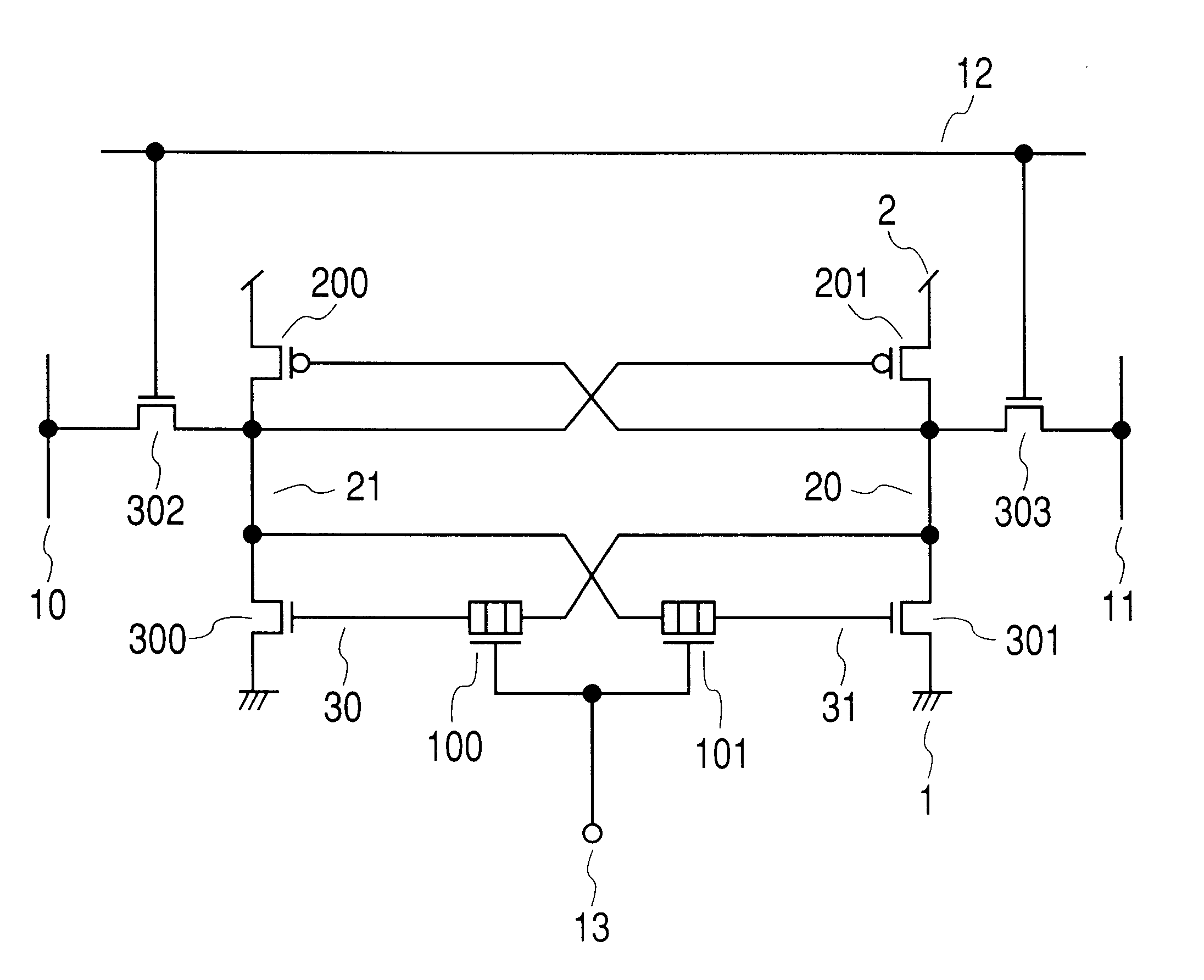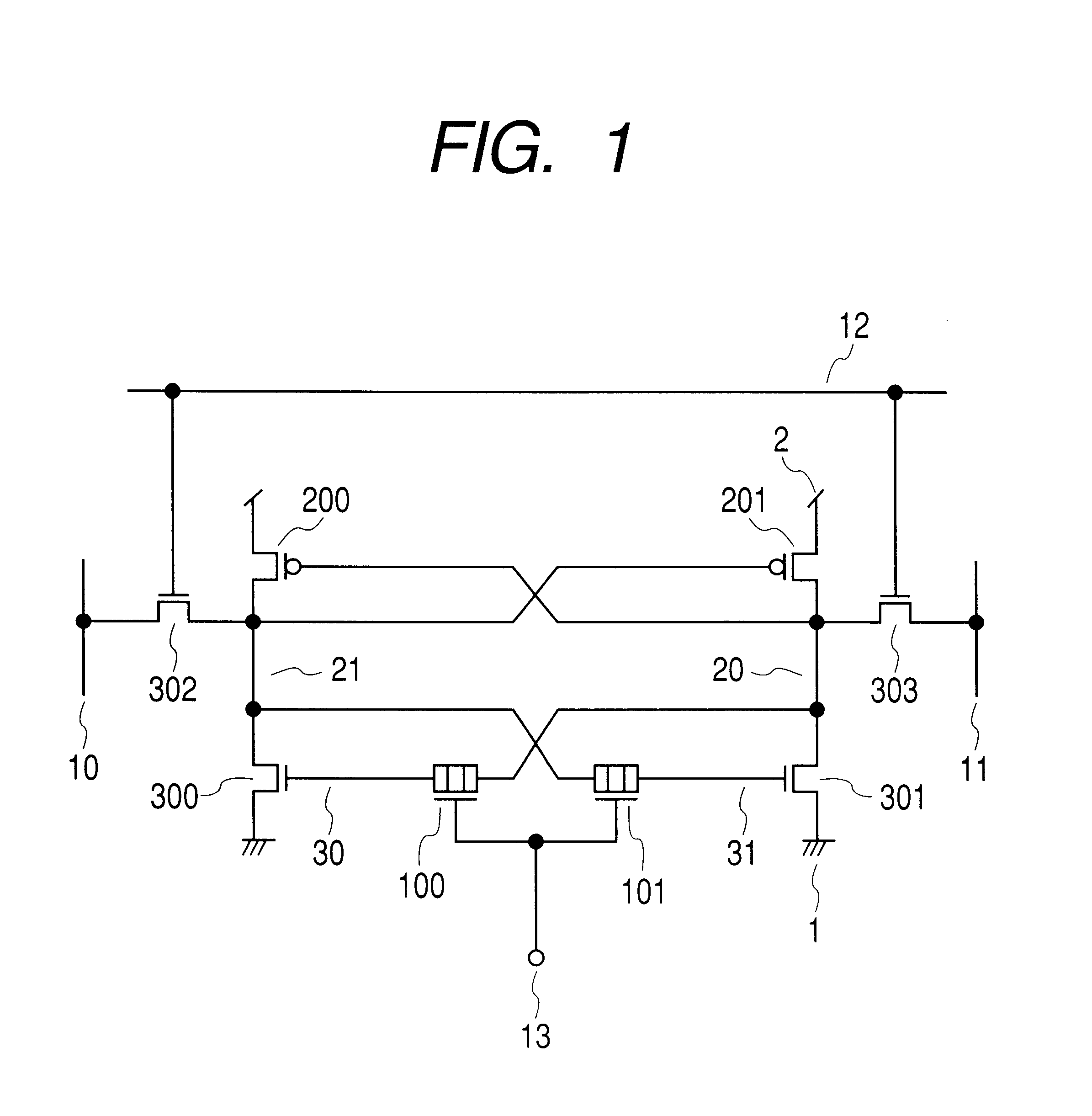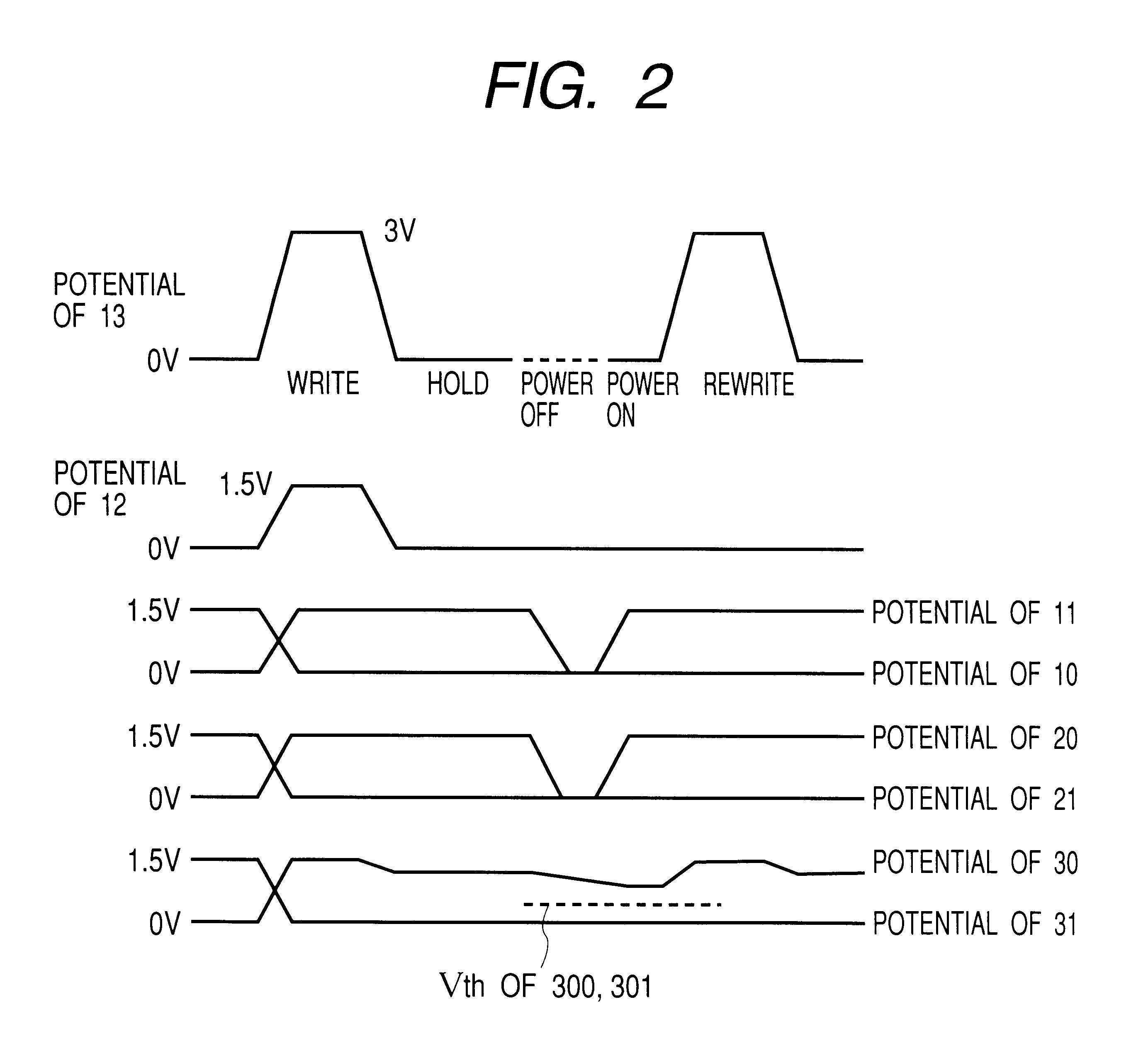Storage circuit with layered structure element
a technology of layered structure and storage circuit, which is applied in the direction of static storage, digital storage, instruments, etc., can solve the problems of problems to be solved, and inability to scale the thickness of oxide film in order to hold data, etc., to achieve low power consumption and low power consumption. , the effect of non-volatil
- Summary
- Abstract
- Description
- Claims
- Application Information
AI Technical Summary
Benefits of technology
Problems solved by technology
Method used
Image
Examples
Embodiment Construction
Before describing modes for carrying out the invention, general means according to the present invention will be listed and described as below.
The present invention will be described with reference to FIGS. 1 and 2. FIG. 1 is a circuit diagram illustrating a flip-flop circuit according to the present invention. FIG. 2 is a time chart illustrating a waveform of operation when this circuit is used. FIG. 3 illustrates an example of memory device structure, which is used for the circuit.
An example of FIG. 1 shows a memory cell that uses a so-called flip-flop. In the so-called SRAM, a plurality of such memory cells is placed. In general, the plurality of memory cells is placed in a matrix form using data lines and word lines.
In FIG. 1, a reference numeral 1 is a negative power supply terminal (usually, GND); a reference numeral 2 is a positive power supply terminal (Vcc); reference numerals 10 and 11 are a write data line and a read data line respectively; a reference numeral 12 is a wri...
PUM
 Login to View More
Login to View More Abstract
Description
Claims
Application Information
 Login to View More
Login to View More - R&D
- Intellectual Property
- Life Sciences
- Materials
- Tech Scout
- Unparalleled Data Quality
- Higher Quality Content
- 60% Fewer Hallucinations
Browse by: Latest US Patents, China's latest patents, Technical Efficacy Thesaurus, Application Domain, Technology Topic, Popular Technical Reports.
© 2025 PatSnap. All rights reserved.Legal|Privacy policy|Modern Slavery Act Transparency Statement|Sitemap|About US| Contact US: help@patsnap.com



